Weiterfahrt Richtung Tarcha (siehe Karte 12 und Karte 13).
Karte 13: Zwischen Boditi und Tarcha (Southern Nations, Nationalities and Peoples Regional State; Wegpunkte 221, 223 - 238)
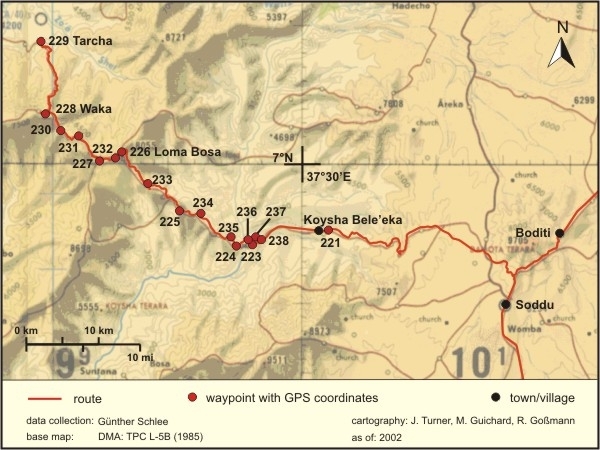
Move mouse over the waypoints to see GPS coordinates.
Fotografiert:
|
Ort |
Bild-Nr. |
Motiv |
|
Waypoint 222 (Wegpunkt und GPS-Koordinaten verloren) |
25-26 |
Landschaftsansichten |
|
Waypoint 223 |
27-28 |
Lat. 6° 54' 10.47" N / Long. 37° 26' 11.16" E Omo-Brücke |
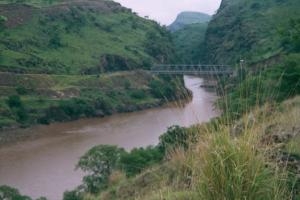
Omo-Brücke, Wegpunkt 223 (Bild-Nr. 28)
Move mouse over picture for larger version
|
Waypoint 224 | Lat. 6° 53′ 58.97″ N / Long. 37° 25′ 8.97″ E Alte Verteidigungswälle von Dawro gegen Wolaita |
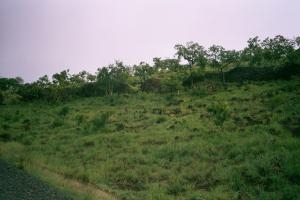
|
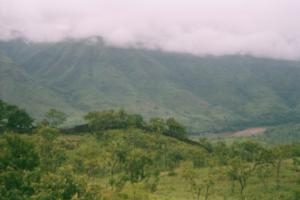
|
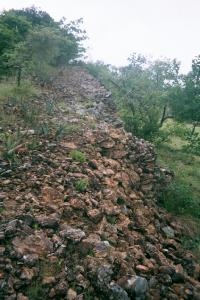
|
Move mouse over pictures to see a larger version with captions
|
Waypoint 225 | Lat. 6° 56′ 31.48″ N / Long. 37° 20′ 50.53″ E Weitere Mauern |
|
Ort |
Bild-Nr. |
Motiv |
|
Waypoint 226
|
1 |
Lat. 7° 0' 41,84" N / Long. 37° 16' 29.52" E Ortschaft Loma Bosa |
| Waypoint 228 |
2-3 |
Lat. 7° 0' 7,56" N / Long. 37° 14' 58.22" E Waaka (Waka auf der Karte), Höhe 2402 m. |
In Waka we go to a taj house called Hiwot taj beet, the "taj house of life". One of the customers appears to be quite knowledgeable in responding to Tadesse’s questions about clans and ritual offices among the Dawro. He and his companion are persuaded by Tadesse to call an elder whom they have described as particularly well versed in history. The elder is a member of the clan from which the qawot (ritual head) comes. This clan is believed to have originated in Gondar and to have come here before the Oromo expansion. Tadesse converses with him for a while and then makes another appointment with him in the hotel, which he recommended to us for the afternoon.
That hotel turns out to belong to the father of a former colleague of Tadesse’s in the office of the Ministry of Culture in Awasa. The former colleague is now in the Department of Finance, a more lucrative position. The father has the title balambaras from the Haile Selassie period and was once the Woreda Administrator. He retired ten years ago. He might have owed his office to his membership in the Kauka clan, qawot clan of the Dawro. This clan also exists among the other Omotic groups, and is designated by a name that Tadesse applies to Dawro, Wolaita, and Gamo, following Harold Fleming (1964). In the other groups, however, Kauka are not the holders of the qawot office.
The position of the locality Waka in the administrative hierarchy has declined. Once a central location that served as the base for the conquest of the south by Ras Wolde Giorgis (at the end of the 19th century), it later became the capital of an awraja (region), then merely of a woreda (district); and now has lost even that function. The balambaras describes how administrative authority went from the hands of a ras to those of people of lower rank and finally to the hands of a mere ato or commoner. Now, it has been replaced as an administrative center by Tarcha, only 17 km to the north but about 1000 m lower in altitude.
